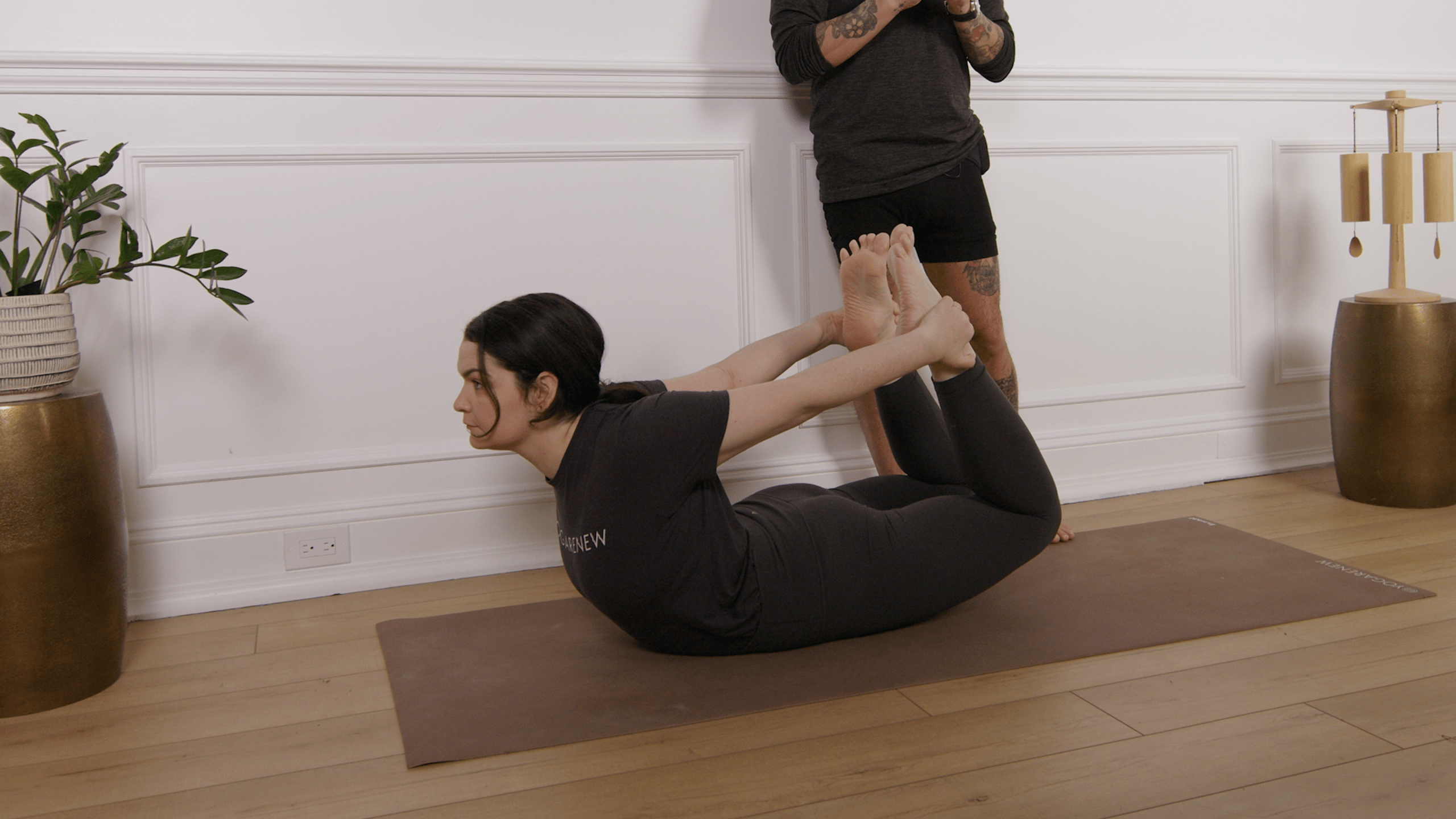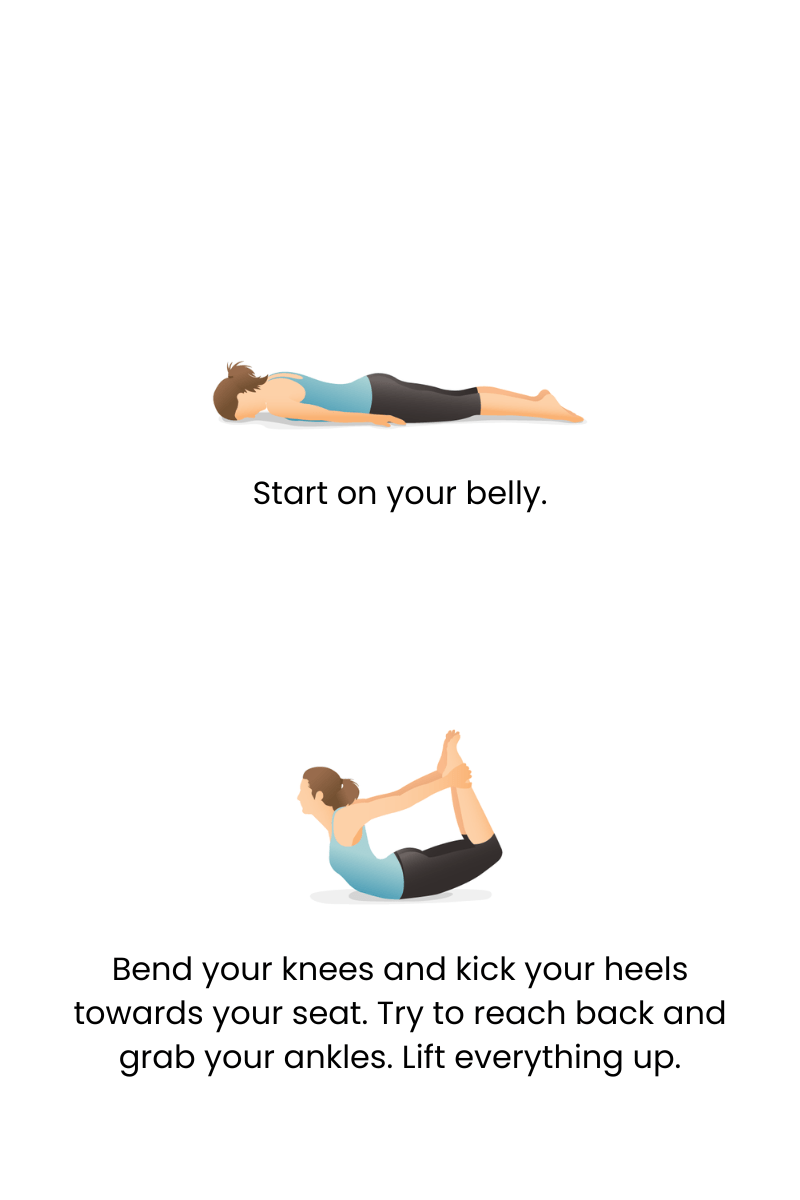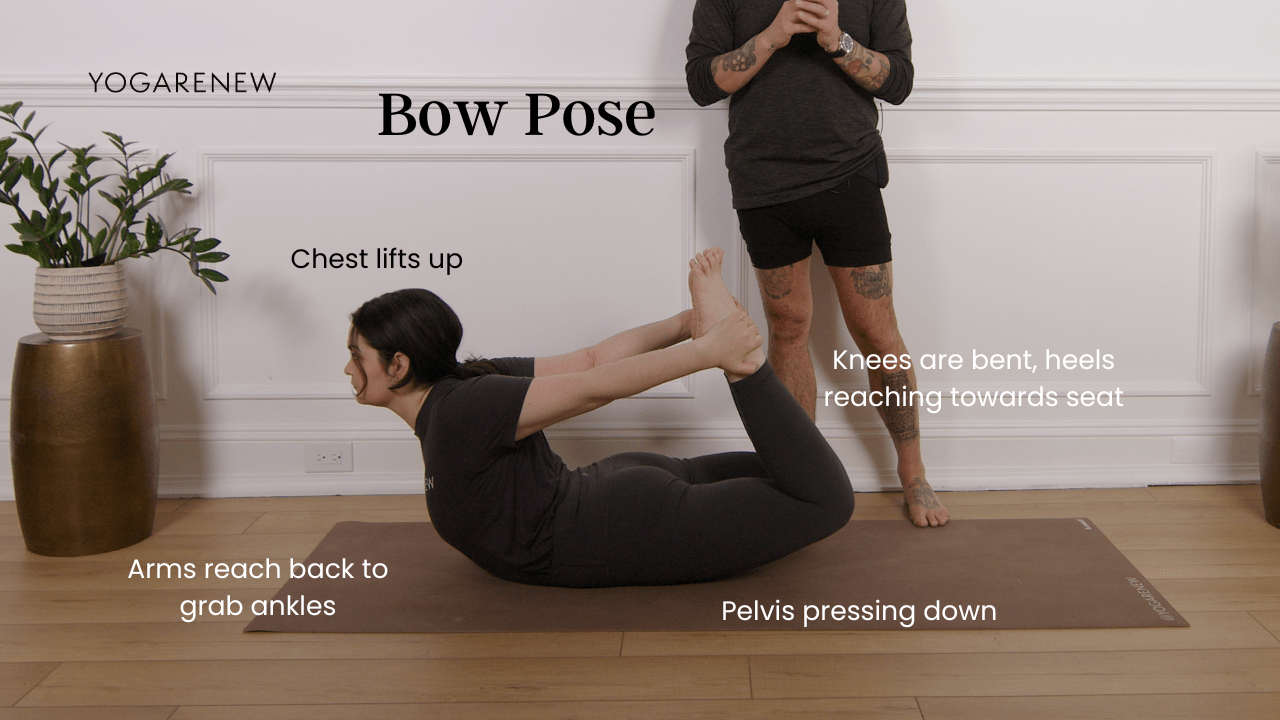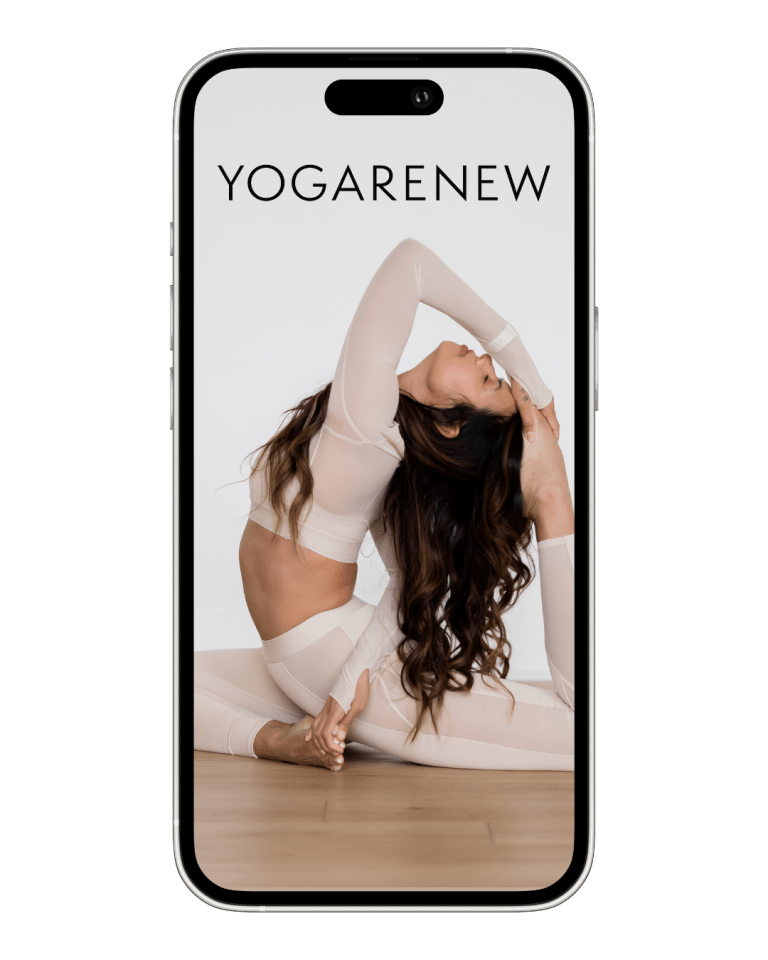What is Bow Pose?
English Name: Bow Pose
Sanskrit Name: Dhanurasana (pronounced DAH-noo-RAH-suh-nuh)
Category: Backbend, Heart Opener, Intermediate, Mood Booster

English Name: Bow Pose
Sanskrit Name: Dhanurasana (pronounced DAH-noo-RAH-suh-nuh)
Category: Backbend, Heart Opener, Intermediate, Mood Booster
Bow Pose, or Dhanurasana, is a dynamic backbend performed lying on the belly. This energizing posture stretches the entire front body—chest, shoulders, abdomen, hip flexors, and thighs—while strengthening the back muscles and stimulating the internal organs.
Often practiced as a peak pose or energizing backbend, Bow Pose brings vitality to the spine and opens the heart center. It cultivates resilience, improves posture, and builds both strength and flexibility—making it a key pose in many Hatha, Vinyasa, and Power yoga practices.


Bow Pose is a powerful heart-opening backbend that awakens the whole body. It builds strength and flexibility simultaneously, making it both challenging and deeply rewarding. When practiced with awareness, Dhanurasana cultivates vitality, expands breathing capacity, and invites emotional release—offering a balanced blend of strength, openness, and energy.
Start with Half Bow or supported backbends like Sphinx or Cobra to build flexibility gradually.
Energizing. It stimulates the nervous system, making it ideal for morning or midday practice.
Work on shoulder and quad flexibility over time. Use breath and active engagement to lift higher safely.

Explore classes & pose tutorials for any style, format, duration or experience level with a free account in the YogaRenew app. Or subscribe and gain access to workshops, live classes and more.